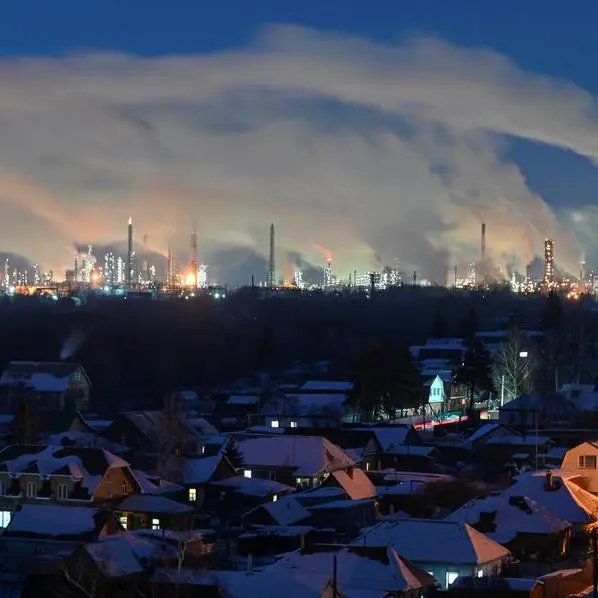PHOTO
LONDON - Global aluminium production rose by a marginal 2.0% last year, a rate of growth that was down from 2.7% in 2021 and the slowest since 2019, according to the International Aluminium Institute (IAI).
Output barely rose at all over the second half of the year. Annualised production of 69 million tonnes in December was just 231,000 tonnes higher than June's global run-rate.
Europe's energy crisis has taken a heavy toll on a notoriously power-hungry sector. Regional production fell by 12.5% last year, a major factor behind the 0.9% decline in output outside of China.
China, the world's dominant producer of primary aluminium, registered 4.0% output growth for the second consecutive year.
But it too has been grappling with power problems, most recently in the hydro-rich provinces of Yunnan and Sichuan. The country's annualised production peaked in August 2022 at 41.46 million tonnes, since when run-rates have fallen by 600,000 tonnes.
Aluminium's energy paradox is coming into ever sharper focus. Production of a metal that is critical for building a greener power system is itself increasingly vulnerable to fluctuating power availability.
EUROPE POWERS DOWN
Western European aluminium output was running at an annualised 2.73 million tonnes in December, down by 540,000 tonnes on December 2021 and the lowest production rate this century.
Russia's invasion of Ukraine and the resulting surge in power prices caused multiple smelter closures and curtailments last year.
Europe's energy crunch has now passed its peak. German baseload power for 2024 delivery has fallen from 470 euros/MWh in August to a current 189.
Some European aluminium capacity is returning. The Dunkerque plant, one of the region's largest with capacity of 285,000 tonnes per year, is reversing the 20% cuts made in the fourth quarter of 2022.
For some, though, it's probably too late.
Slovakia's sole smelter with capacity of 175,000 tonnes per year has closed all primary operations after 70 years of operation.
The Podgorica smelter in Montenegro closed the last 60,000 tonnes of primary capacity at the end of 2021.
Interestingly, both plants are counted in the IAI's Eastern Europe and Russia category. So too are smelters in Romania and Slovenia, both of which have drastically curtailed operations over the last year.
Yet regional production was down by only 1.4% last year, a counterintuitive outcome unless the closures were offset by higher output in Russia.
This is possible given Rusal was planning to fire up its new Taishet plant last year, although there has been no recent update on the 428,500-tonne per year project.
STOP START IN CHINA
China's production of 40.39 million tonnes of aluminium last year was a new annual record but the headline masks considerable chop and change in the country's base smelter network.
New capacity was brought on stream and mothballed capacity restarted in some provinces, while in others power restrictions translated into mandatory curtailments for smelter operators.
The balance flipped from fast growth in the first half of 2022 to sliding output over the closing months.
This year has seen no repeat of the blanket restrictions imposed during the 2021 winter energy crunch but drought in the southwest of the country is weighing on smelter operating rates. Some two million tonnes of capacity in Yunnan, Sichuan and Guizhou was off-line at the end of 2022, according to Shanghai Metal Market.
It's unlikely to return until the second quarter, when the rainy season should restore depleted reservoir levels in the region's hydro power system.
There is still plenty of room for production growth in China with the government capacity cap of 45 million tonnes not yet reached.
However, the last two years have shown that it is increasingly rare for China to run at its existing capacity for any prolonged period of time before power restrictions of one sort or another are imposed by provincial governments looking to balance energy loads.
GREEN PRESSURE
It's noticeable that the drought problems in China's southwest haven't deterred aluminium producers from transferring capacity there from coal-powered provinces in the quest for metal with a lower carbon footprint.
The pressure to go green is also becoming a key factor in smelter restarts in the rest of the world.
Latin America was the fastest-growing aluminium production region last year with output up 10.7% year on year. A key driver was the restart of the Alumar smelter in Brazil based on a switch to renewable power. Ramp-up is taking a bit longer than planned, according to 40% owner South32, which is not surprising since the plant last operated seven years ago.
Alcoa, which owns the balancing 60% stake in Alumar, is also hoping to restart its San Ciprian smelter in Spain after a switch to renewable energy. It has secured two wind-power deals which would cover 75% of energy needs for the 228,000-tonne per year plant.
Even Slovalco might be resuscitated by Norwegian owner Hydro if the Slovak government can implement the European Union's framework on carbon compensations.
POWER PARADOX
Yet the rush for renewable power merely accentuates the core aluminium paradox. As ever more smelters switch to green energy sources, global aluminium production is ever more dependent on seasonally variable power availability.
Moreover, seasonality itself is changing as global warming brings both longer droughts and hotter summer heat waves, which combine to lift energy usage while depressing power generation.
It has become clear in the last few years that China's aluminium smelters, along with other power-intensive industries, are first in line for mandated curtailments when a province is trying to balance its grid.
Such regional adjustments are now part and parcel of the global aluminium production landscape but they have injected a new degree of volatility into aluminium's previously slow-changing supply side.
They also raise the possibility that China's seemingly unstoppable aluminium juggernaut has run out of road even before reaching the government's capacity cap. The opinions expressed here are those of the author, a columnist for Reuters.
(Editing by Kirsten Donovan)























